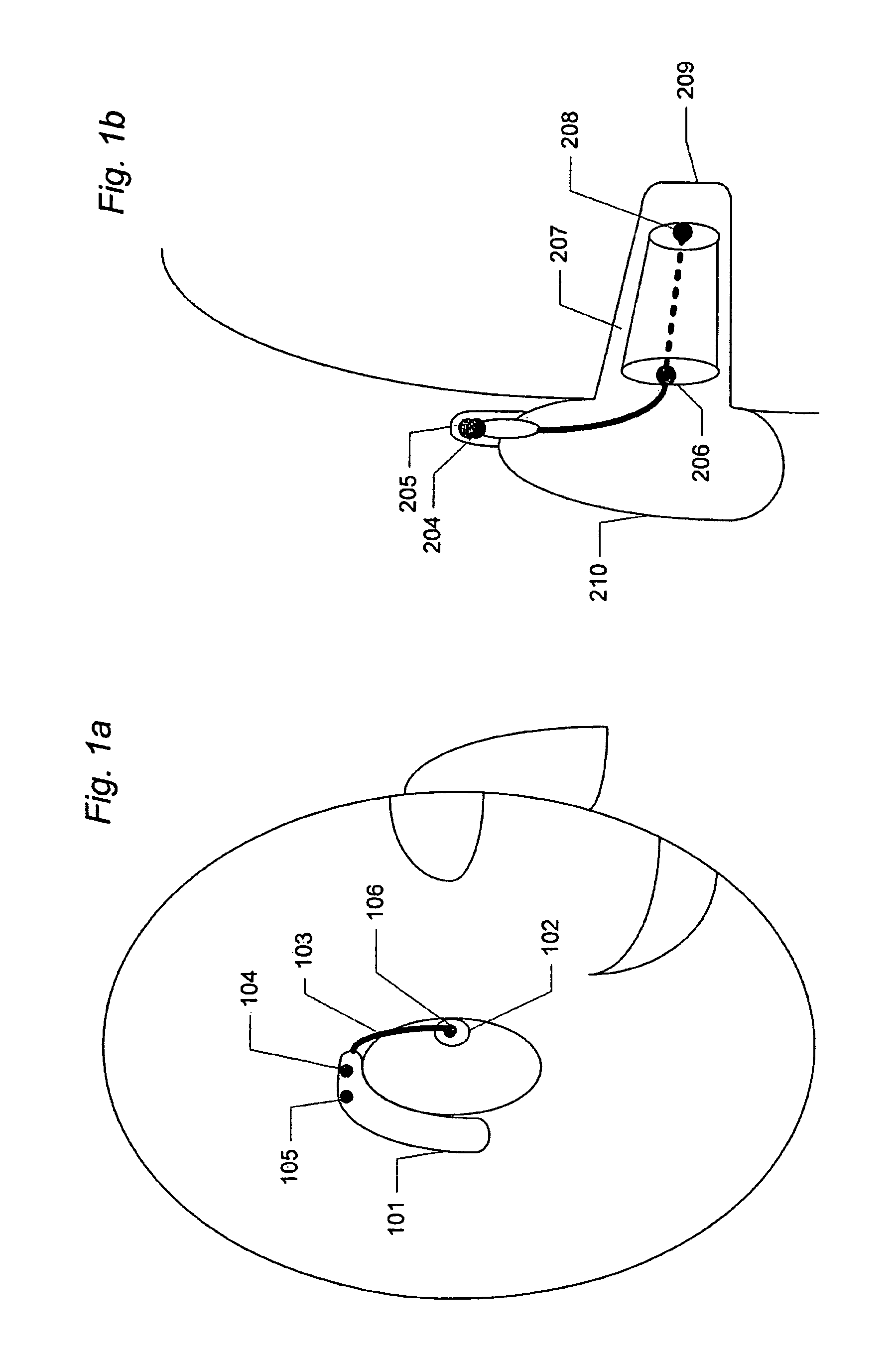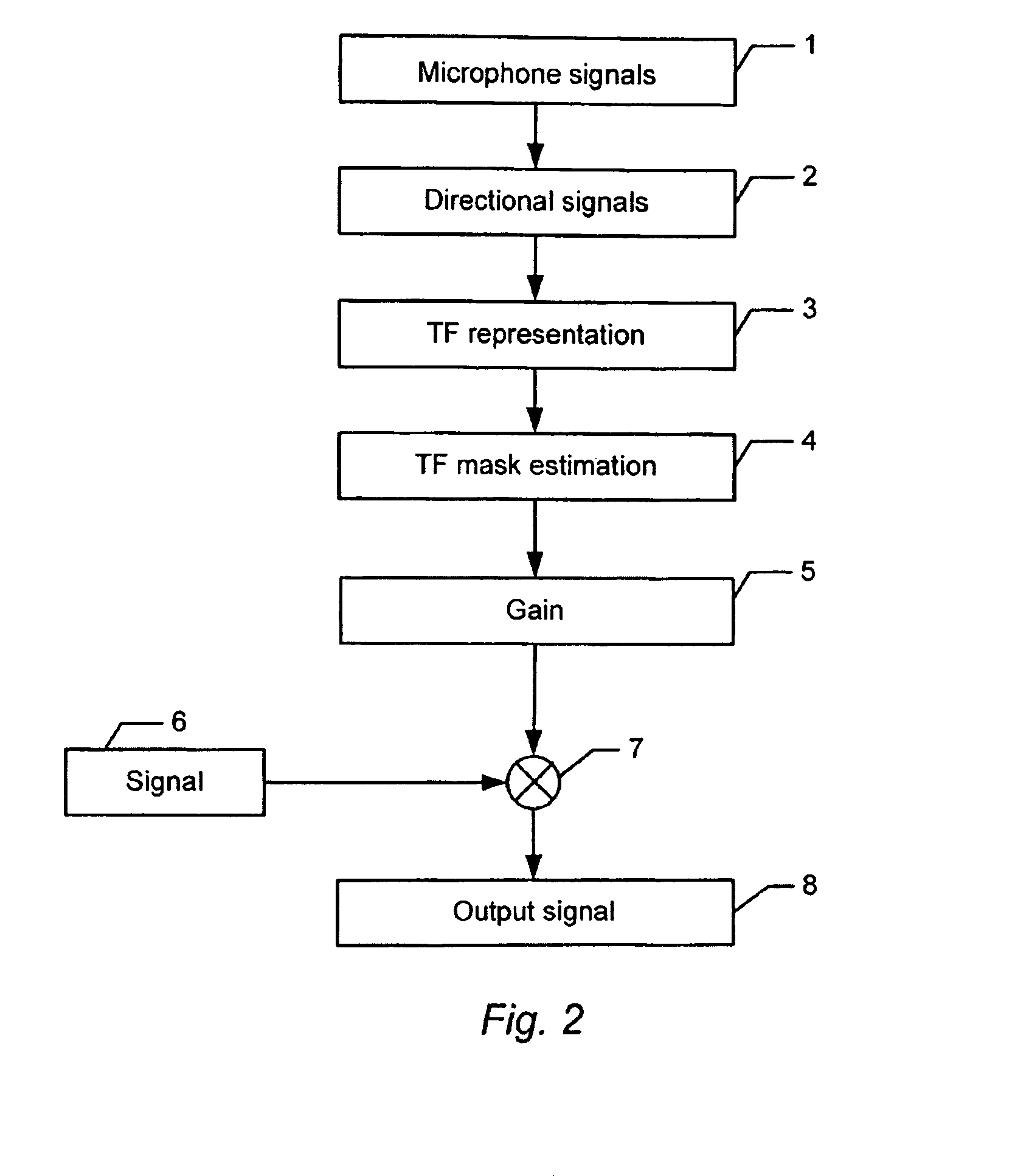Method of estimating weighting function of audio signals in a hearing aid
a technology of audio signal and weighting function, which is applied in the direction of transducer details, electrical transducers, electrical apparatus, etc., can solve the problems of unnatural sensation for hearing aid users, difficult to obtain good sound localization and speech intelligibility, and more microphone nois
- Summary
- Abstract
- Description
- Claims
- Application Information
AI Technical Summary
Benefits of technology
Problems solved by technology
Method used
Image
Examples
Embodiment Construction
[0099]In the following description, reference is made to the accompanying figures, which show by way of illustration how the invention may be practiced.
[0100]FIG. 1a shows a schematic view of a hearing aid user wearing a hearing aid with a number of input transducers, such as microphones. The hearing aid is shown to comprise a part away from the ear, such as a behind-the-ear (BTE) shell or part 101 and part near or in the ear canal, such as an in-the-ear (ITE) part 102. In the following the part near or in the ear canal will be referred to as an ITE part, but it is understood that the part arranged near or in the ear canal is not limited to an ITE part, but may be any kind of part arranged near or in the ear canal. Furthermore, in the following, the part arranged away from or behind the ear will be referred to as a BTE part, but it is understood that the part arranged away from or behind the ear is not limited to a BTE part, but it may be any kind of part arranged away from or behin...
PUM
 Login to View More
Login to View More Abstract
Description
Claims
Application Information
 Login to View More
Login to View More - R&D
- Intellectual Property
- Life Sciences
- Materials
- Tech Scout
- Unparalleled Data Quality
- Higher Quality Content
- 60% Fewer Hallucinations
Browse by: Latest US Patents, China's latest patents, Technical Efficacy Thesaurus, Application Domain, Technology Topic, Popular Technical Reports.
© 2025 PatSnap. All rights reserved.Legal|Privacy policy|Modern Slavery Act Transparency Statement|Sitemap|About US| Contact US: help@patsnap.com



